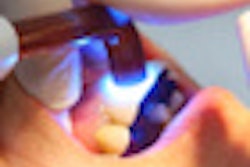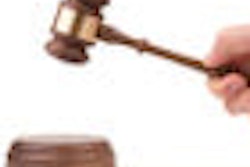When used to activate bleaching gel, low-level laser energy increases the effectiveness of teeth whitening, according to a study in the Journal of Esthetic and Restorative Dentistry (June 15, 2011).
Researchers from São Paulo State University wanted to assess the effectiveness of a low-intensity red laser for activating a bleaching gel, as well as its effect on the temperature of the bleaching gel and the dental pulp.
They immersed 40 extracted bovine teeth in coffee for 14 days to darken the teeth. The specimens were then randomly distributed into two groups of 20: the control, which did not receive light, and the experimental group, which received light from an appliance fitted with three red laser diodes.
A green-colored, 35% H2O2-based bleaching gel was applied to the teeth for 30 minutes and changed three times. Both before and after bleaching, the teeth were assessed to obtain the L*a*b* values. To assess temperature, 10 human incisors were prepared, in which one thermocouple was placed on the bleaching gel applied on the surface of the teeth and another inside the pulp chamber.
The researchers found a significant difference in color between the groups (p = 0.016), and the experimental group presented a significantly higher mean variation (7.21 ± 2.76) in comparison with the control group (5.37 ± 1.76). While there was an increase in pulp temperature in the experimental group, it was not sufficient to cause damage to the pulp, they noted.
"Bleaching gel activation with [a] low-intensity red laser was capable of increasing the effectiveness of bleaching treatment and did not increase pulp temperature to levels deleterious to the pulp," the study authors concluded.



















